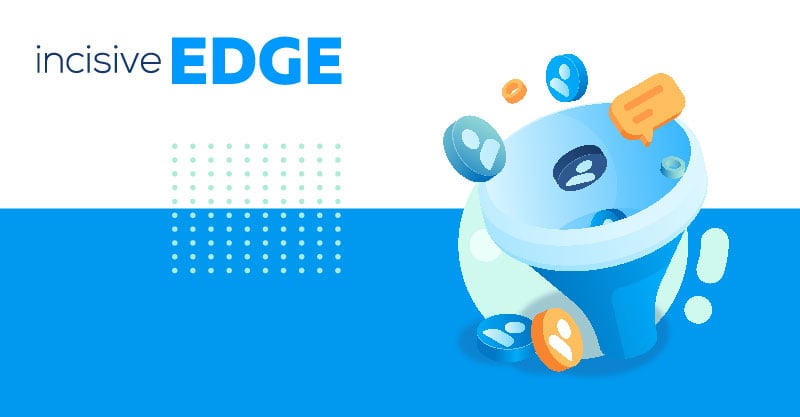Outbound marketing refers to all traditional marketing activities, including media advertising, direct mail, telemarketing, trade shows, etc., where businesses push messages out to potential customers. It can be amazingly good at driving brand awareness, maintaining brand relevance, and introducing products to new audiences. Outbound marketing helps businesses sustain and grow mindshare that can drive recommendations, word of mouth marketing, and lead generation.
This form of marketing still accounts for 90% of business marketing budgets despite being increasingly referred to as distracting, interruption-based and spray-and-pray. These views are essentially based on the fact that outbound marketing is expensive, has lower ROI and is considered to be less effective at reaching prospects and leads.
Learn about sales enablement.
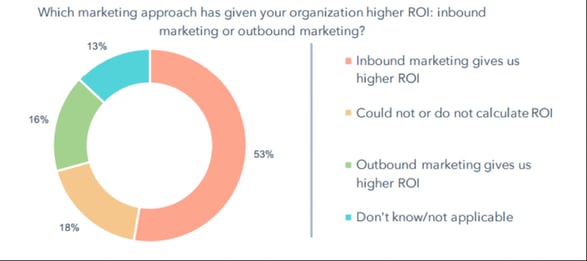
(Image source: digitalmarketingcommunity.com)
In stark contrast, inbound marketing generates more leads, at a lower cost, with a higher chance of conversion and, therefore, at a generally higher ROI than that of outbound marketing.
Inbound marketing refers to a strategic approach to “pull” in a potential audience by creating content that is aligned with buyer needs and preferences. This type of marketing relies on a diverse array of content types including blogs, infographics, e-books, white papers, videos, etc.
Outbound marketing vs inbound
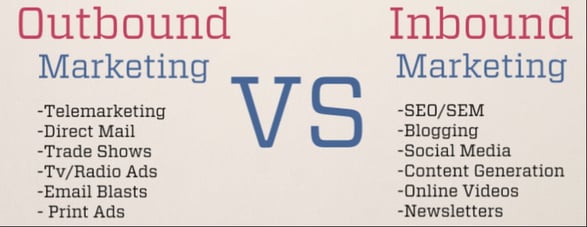
(Image source: boignet.com)
Where outbound marketing uses generic messaging for a mass audience, inbound marketing is targeted at a researched set of potential customers with messaging that resonates with their specific expectations.
At this point, all the facts seem to indicate beyond question that inbound marketing is undeniably better for your business. However, the reality is not as black and white as it seems. There is still a case to be made that used strategically, inbound and outbound strategies can actually be complementary and that a strategically integrated approach can amplify the value of your entire marketing effort.
Integrated Outbound Marketing/Inbound Marketing Strategy
Both inbound marketing strategies and outbound marketing strategies have their distinctive characteristics, strengths, and applications. However, they should not be seen as alternatives to each other. Most B2B marketers will require some combination of inbound marketing tactics and outbound marketing tactics. The focus, therefore, should be on assessing the qualities of each technique that are most relevant to a business and its target audience and then building an optimal combination that will maximise desirable outcomes.
Let's now look at some techniques to combine inbound and outbound marketing.
1. Account-based marketing
Account-based marketing (ABM) is a focused strategy to deliver personalised messaging, content and experiences and targeted advertising to high-value accounts. There are two key aspects to ABM: one, it is a collaborative strategy that aligns sales and marketing. And two, the focus is not just on companies that are prospective customers but specifically on key decision-makers within.
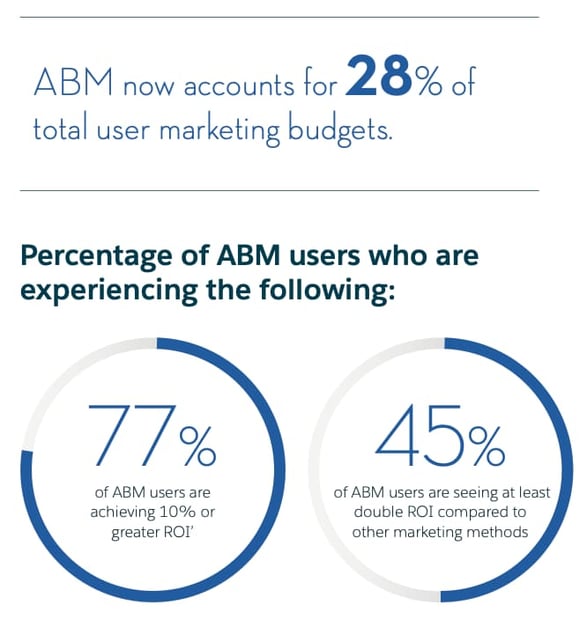
(Image source: salesforce.com)
According to Salesforce, ABM programs account for over a quarter of total B2B marketing budgets with nearly half of all ABM users seeing at least double the ROI compared to other marketing approaches. More importantly, the success of ABM is closely correlated with the ability of sales and marketing teams to collaborate and jointly execute these programs.
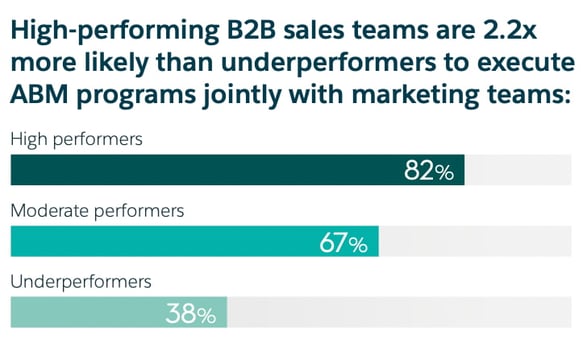
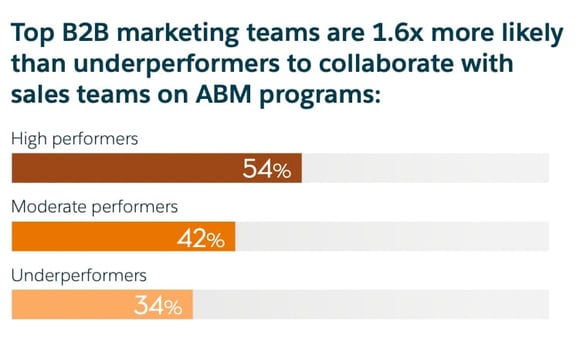
(Image source: salesforce.com)
2. Combining SEO and PPC
In some ways, the view of SEO (search engine optimization) and PPC (pay-per-click) is often analogous to that of inbound and outbound marketing – that is, as two discrete rather than complementary functions.
But a quick look at the statistics reveals that this may not necessarily be true. Though SEO is comparatively cheaper (if not free) and delivers organic listings, the optimal outcome is to rank on the first page of the search results for a given set of keywords. As of 2020, 68% of all trackable website traffic traces back to a combination of SEO plus PPC tactics. So, even if your SEO- or PPC-only approach is working, you might still be leaving value on the table.
3. Intent-based marketing
Observable behaviour is one thing. But often, decoding the intent underlying that behaviour can give B2B marketers the insights required to choose the most appropriate inbound and/or outbound tactics to target that potential buyer.
Intent goes much beyond just identifying buyers that are actively searching for a solution, the type of content they are consuming, and the products/services they are interested in based on the web content they consume. Intent data creates a complete picture of the buyer including their purchase priorities, information and communication preferences, and unique purchase motivations.
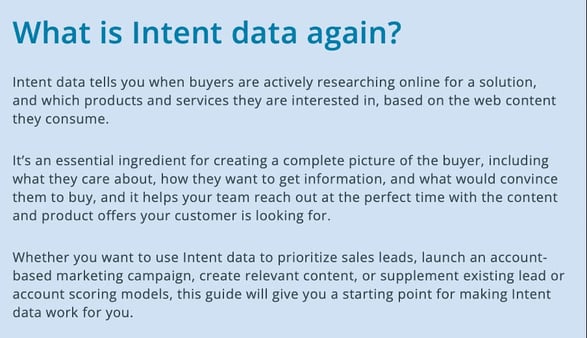
(Image source: bombora.com)
Sales and marketing teams can then use this intent data to support personalised marketing efforts all the way from the top to the bottom of the funnel. For instance, this could involve tailoring content to influence decisions, prioritising inbound leads based on specific behaviours, or crafting outbound campaigns for potential customers. With intent-based marketing, it is no longer about inbound vs outbound but rather about the blend of tactics that work best to convert intent into action.
Ideally, the twain should meet
There is, probably, a unique set of business circumstances that would make outbound marketing the only optimally viable model for a business to communicate with its target customers. Similarly, it is not inconceivable that certain businesses can completely eschew outbound marketing and thrive solely on inbound strategies. However, for every other business in between, a custom blend of inbound and outbound techniques represents the best model to maximise marketing performance. And choosing the right blend for your business should not be based on the general advantages and disadvantages of each approach, but on the specific needs, preferences, and behaviours of your target audience.
If you need help crafting the perfect marketing strategy for your business, get in touch with the experts here at Incisive Edge today.
